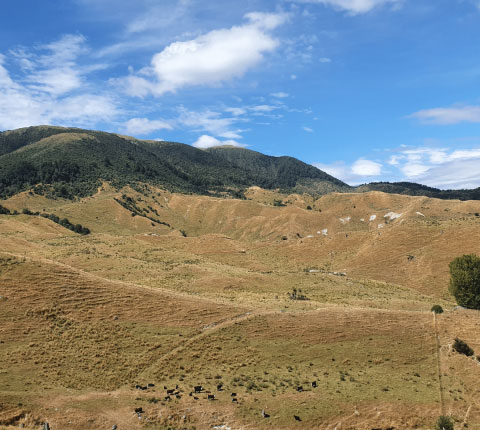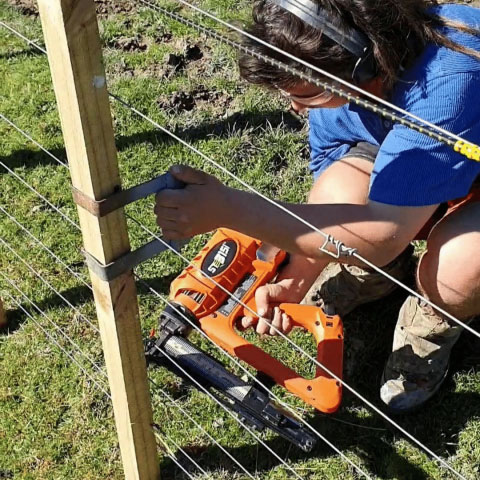Keeping cattle in the right place has innumerable benefits, including securing vital livestock assets. Good fencing is key to that containment and the peace of mind that goes with it is invaluable.
“As a non-income generating activity, fencing is not what most farmers want to be doing with their day,” Colenso Station sheep and beef farmer Tom Platts says.
With Stockade’s ST315i cordless batten stapler, he says it is much easier to maintain great fences and focus on revenue-driven work.

“Like many farmers, we don’t get contractors in. Fencing is done by our existing farm labour. The ST315i is a worthwhile investment. Our fences are up to a pretty good standard and with fewer labour costs, we are able to spend more on materials and just get a lot more done.”
Two years ago, Tom was frustrated over the time involved in hand-hammering batten fences across the hill country farm, when his neighbour introduced him to Stockade’s cordless batten stapler. With 780ha effective of medium-to-high hill country and little vehicle access to fence lines, he thought this tool would be handy.
“I would say this tool is five times faster than stapling by hand and by the time you have paid the labour for someone hand-stapling, the ST315i would only take about 20 hours to pay itself off. It also makes fencing far less of a chore. I wouldn’t batten a fence line by hand now. It’s earned its keep.”
Converting the station’s four-wire electric into nine-wire conventional fencing is a focus for this autumn and Tom and his farm labourer Hunter have a good system going. One works with the cordless batten stapler and a steel hook to pull the wire, while the other handles the bungy and set square. Working turnabout, the team gets through a full day of work before morning tea.
Stockade North Island territory manager Mike Billinghurst says there are three non-negotiables for a strong long-life batten fence.
“The single biggest thing you can do to keep the structure of your fence long-term is to start with dry timber. From the time of purchase, battens should be fillet-stacked under trees or in the corner of a shed, so they dry out before being put on the fence.
“Next is the correct staple. Pine battens have a Chromated Copper Arsenate treatment, which is quite hard on steel. Stockade staples use a heavy coat of zinc and aluminum, providing superior corrosion resistance over standard hot-dipped galvanized staples — and a stronger, longer hold in the batten.
“Finally, it’s all about technique. Staples should be placed into the batten leg-to-leg, with both legs having contact with the wire. Alternate the angle of the staple left-to-right as it goes down the batten, and alternate side-to-side from the centre of the batten.

“Put those things together with Stockade’s cordless tools and you have a well-built fence.”

